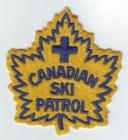1
Many hazards, unacceptably high by today's standards, were an inseparable part of skiing in Canada in the 1920s and 30s, increasing proportionately to participation as more and more people flocked to join the sport before World War II. Perhaps the worst of these, certainly the most painful, was the inability of the ski binding to release the boot in a fall. Years would pass before the first releasable bindings were available to all skiers. In the meantime, legs were routinely subjected to the twisting forces exerted by a long ski and non-releasing bindings and, all too often, with a catastrophic outcome. Compounding the problem was the absence of trail grooming and, in the East particularly, the narrowness of the trails themselves. Skiers were on their own, left to negotiate the trails in whatever conditions nature provided. By today's standards, they were frequently difficult and, as often as not, dangerous.Responding to the problem, the Canadian Amateur Ski Association (CASA) established six first aid stations in the Laurentian Mountains in the 1935-36 season staffed by St John Ambulance Brigade members. negotiated with the St John Ambulance Brigade to establish six first aid stations in the Laurentian Mountains. As an experiment, it was successful, offering competent first aid to injured skiers. Brigade members, however were not skiers. Skiers with severe leg injuries suffered on trails far from the first aid stations had to rely on inexperienced rescuers who lacked specialized equipment and training, purpose-built toboggans or the necessary skills to perform traction splinting to stabilize fractures for example. 1 (Laffoon, "May I help you? The first 50 years" p.7). As late as 1939 local initiatives to form ski patrols throughout the country were few in number; the establishment of a Province-wide, let alone Canada-wide, ski patrol system remained an elusive goal.
In late 1940, CASA asked Dr. Douglas Firth -- recognized as the father of skiing safety in Canada -- to form an organization similar to the successful U.S. National Ski Patrol System (NSPS). Late in the summer of 1941, a Canadian Ski Patrol System (CSPS) organized into five zones across Canada, emerged as a standing committee of the CASA "...to act as a national cooperative movement to be run by skiers for the benefit of skiers" (ibid. p.10).
Delayed by the outbreak of the Second World War, the CSPS expanded slowly. It would take ten years after it was first founded to achieve the original objective, a nationwide system with ski patrols established in every province from Nova Scotia to British Columbia. In the 1950s, organizational arguments and disagreements threatened the existence of the fledgling CSPS. They were, fortunately, eventually resolved and by 2004, the CSPS had over 5,000 members patrolling throughout nine geographic regions across Canada.
2
Howard Bergin with other members of St. John's Ambulance Brigade and injured skier in sled.20th Century, Circa 1935-1939
Laurentian Mountains, Quebec
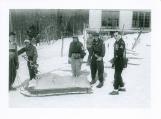 Credits:
Credits:Canadian Ski Museum
3
St. John Ambulance Brigade radiotelephone operators Don Clements and Wally Johnstone at Old Chelsea1950-1960
Old Chelsea, Quebec
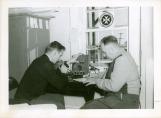 Credits:
Credits:Canadian Ski Museum
4
Members of St. John Ambulance Brigade at Camp Fortune pulling sled with injured skier.20th Century, Circa 1935-1939
Camp Fortune, Quebec
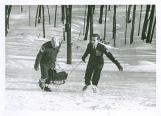 Credits:
Credits:Canadian Ski Museum
6
Admitting injured skier to the St. John Ambulance post at Camp Fortune1950-1960
Camp Fortune, Quebec
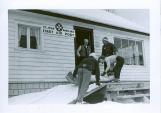 Credits:
Credits:Canadian Ski Museum
7
St. John Ambulance Brigade pulling sled with injured skier, as skiers competing in race look on.20th Century, Circa 1935-1939
Camp Fortune, Quebec
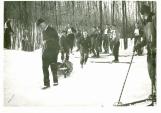 Credits:
Credits:Canadian Ski Museum
8
CPS membership badge for Dr. Firth, the first member of the service.1941-1960
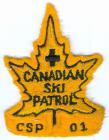 Credits:
Credits:Canadian Ski Museum
9
Admitting injured skier to the St. John Ambulance post at Camp Fortune1950-1960
Camp Fortune, Quebec
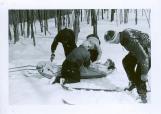 Credits:
Credits:Canadian Ski Museum
10
This is an early CSPS badge. It has the original design of the Maple leaf and cross.1941-1950
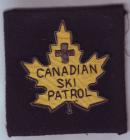 Credits:
Credits:Canadian Ski Museum
11
Members of St. John Ambulance Brigade loading injured skier in ambulance at Camp Fortune.20th Century, Circa 1935-1939
Camp Fortune, Quebec
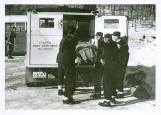 Credits:
Credits:Canadian Ski Museum
12
Injured skier with member of St. John's Ambulance in front of first aid cabin at Camp Fortune20th Century, Circa 1935-1939
Camp Fortune, Quebec
 Credits:
Credits:Canadian Ski Museum
13
Member of St. John Ambulance Brigade giving first aid to injured skier in cabin at Camp Fortune.20th Century, Circa 1935-1939
Camp Fortune, Quebec
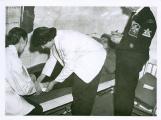 Credits:
Credits:Canadian Ski Museum
14
Taking ski accident victim down Alexander's Hill1940-1945
Alexander's Hill
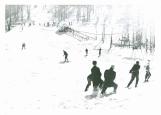 Credits:
Credits:Canadian Ski Museum
